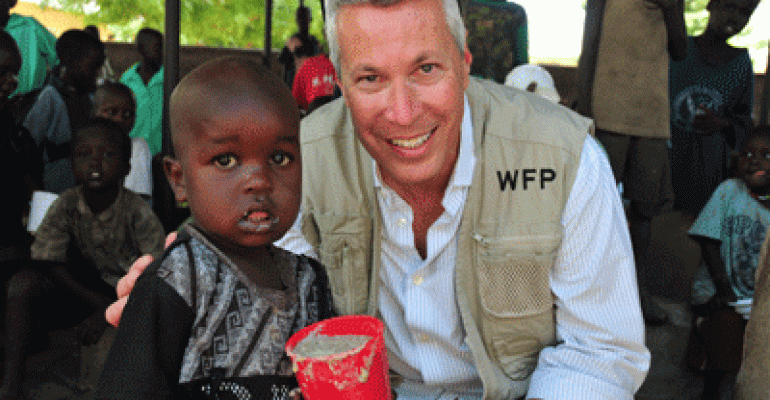Yum! Brands Inc. recently marked the fifth year of its World Hunger Relief program, and aims to raise more than $25 million this year.
Through volunteering, a public relations campaign and soliciting donations worldwide, the Louisville, Ky.-based parent of more than 38,000 KFC, Taco Bell and Pizza Hut restaurants has become the largest private-sector donor to the United Nations’ World Food Programme via World Hunger Relief, said Jonathan Blum, Yum senior vice president and chief public-affairs officer.
The efforts help feed impoverished and hungry people around the world, partly with the nonprofit organization’s nutrition-fortified biscuits.
Blum has traveled with other Yum executives to see the World Food Programme in action in places like Haiti, Guatemala and Sudan. He said the company will continue to leverage its size and scale to make World Hunger Relief central to its purpose.
He recently spoke with Nation’s Restaurant News after returning from Kenya, where he saw firsthand how hunger-relief efforts are needed in the country’s slums, refugee camps and remote tribal areas.
How much money is Yum attempting to raise this year for World Hunger Relief?
Our goal is to raise $27 million this year, which would put us well in excess of $100 million for five years. We have purchased about 350 million meals in that time for the World Food Programme, to be given primarily to children and women starving to death in remote corners of the world. The World Food Programme is often the only lifeline for these people.
For our customers, 100 percent of every donation they make goes to buying food. The Yum Foundation covers the 7-percent administrative fee the World Food Programme has for overhead.
Continued from page 1
How did your most recent mission trip to Kenya affect you?
It was incredibly difficult to see people living in these conditions in the slums of Kibera, or the Dadaab refugee camp, or in this remote area of Turkana. I saw abject poverty and starvation, and I could have come out of there depressed. But we’re more motivated than ever to do something about world hunger. Yum will donate the first $1 million of World Hunger Relief funds this year to the Horn of Africa.
Yum has identified Africa as a growth target over the next few years. Does the company feel the need to feed a market before it can serve that market?
We allow the World Food Programme to determine where they administer their food. They analyze the most impoverished parts of the world and identify regions with no social safety net, where there’s nobody helping but humanitarian agencies. This has nothing to do with business, but everything to do with corporate social responsibility. We’re not overlapping where we are or may do business with this program. We just know there’s a great need out there, a billion people starving, and we have 1.4 million people in our system very actively engaged in this movement.
How does the World Hunger Relief effort grow each year?
In that first year, we were prescriptive. We said that people should do all these certain things to get involved in World Hunger Relief. The last conference call, we had more than 1,000 of our ambassadors participate, from every country, and we’ve learned to let them do their own thing. People are literally climbing mountains and jumping out of airplanes, doing car washes and bike-a-thons, to raise money and awareness. They all want to do as much as they possibly can, so it isn’t a problem to make it bigger and better. It’s now become part of who we are as an organization.
How can smaller restaurant companies start their own hunger-relief efforts?
There are a lot of ways to get involved, but it could be as easy as donating unused food that still has nutritional value to a local shelter or food bank rather than throwing it away. It’s a wonderful feeling to help people who can’t help themselves, and it really all starts with food. The World Food Programme also is teaching people how to create their own self-sustaining infrastructure for farming, schools and clinics. They’re putting themselves out of business once these communities become self-sustaining. Those can be started in your own community.
Contact Mark Brandau at [email protected].
Follow him on Twitter: @Mark_from_NRN

